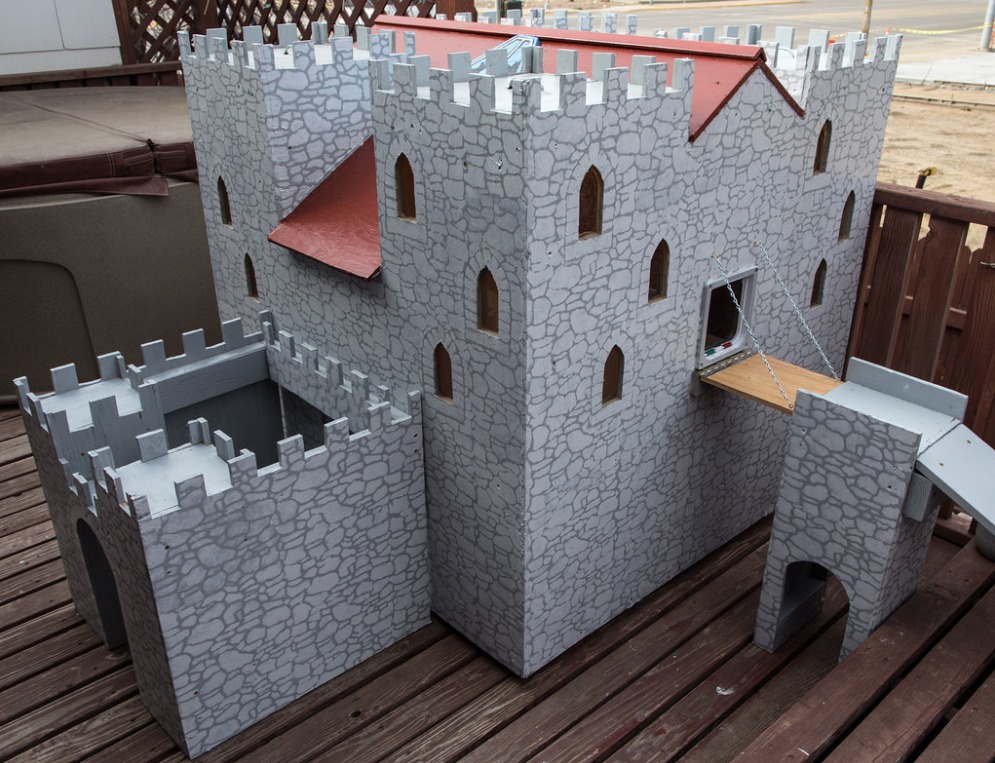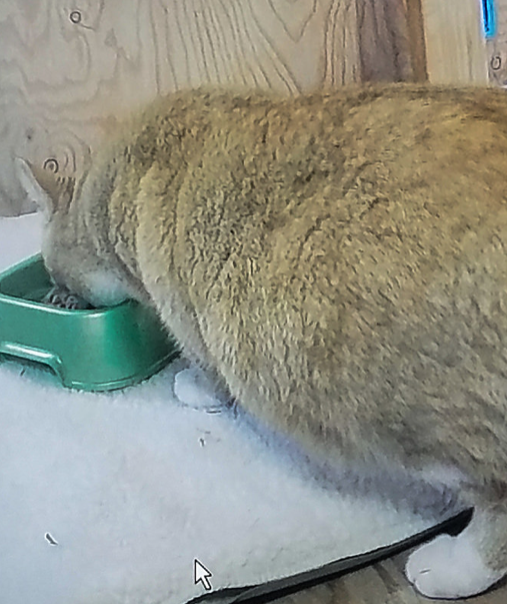Cat Castle (The Catsle)
Here's our 2nd outdoor cat house - a catsle. It took myself and my SO, Deb, about three months to do from the first design steps to the last dab of paint:

The catsle is lighted, there are two interior floors, two means of access (one via the drawbridge on the right, one via a cat door within the barbican at the left.) It's a great shelter from the winter weather here, which reaches -40º on a fairly regular basis. The main catsle floor space (on both floors) is about 4 x 4 feet (1.1 x 1.1 meters), with the two interior floors having about 1.5 feet (.5 meter) clearance, actually a bit more on parts of the second floor where the peak of the roof is. The whole main assembly is 4 x 4 x 4 feet (1.1 x 1.1 x 1.1 meters.) That's not counting the barbican and drawbridge assemblies.
This is what the catsle looks like at night:

Here's a photo of part of the interior taken from the display of a security camera mounted inside the catsle:

That's a heated pad, under the cover it reaches normal-ish feline body temperature, 102ºf, and when they lie on it, the top of the pad can't radiate the heat, so it warms right up. On cold days, when they're not on it, the pad is about 30º to 40ºf above the ambient temperature – warm enough to get them to lay down on it. That orange fellow is a feral that hangs around. He's pretty hefty, a consequence of really not knowing when to stop eating. It's almost impossible to control their food intake; if you put out a little, some of them don't get any. If you put out a lot, some of them overeat. So we err on the side of "a lot."
As you may have surmised, we love cats, and do what we can to help the ferals out. There's no reason not to have fun doing so, either!
This is our second shelter; you can see our first effort here.
Female felines are \superfecund
The cat appears to be the only domestic companion animal not mentioned in the Bible.
A cat usually has about 12 whiskers on each side of its face.
The average lifespan of an outdoor-only (feral and non-feral) is about 3 years; an indoor-only cat can live 16 years and longer. Some cats have been documented to have a longevity of 34 years.
Unlike dogs, cats do not have a sweet tooth. Scientists believe this is due to a mutation in a key taste receptor.
A cat’s brain is biologically more similar to a human brain than it is to a dog’s. Both humans and cats have identical regions in their brains that are responsible for emotions.